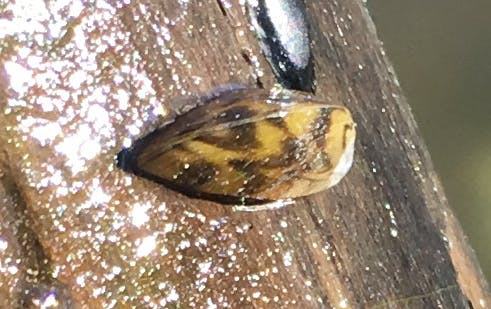What Matters to a Mussel
Predicting Zebra Mussel Infestation Severity
The chemical and physical makeup of a lake determines
the suitability of that lake to support Zebra Mussels.
The chemical and physical makeup of a lake determines the suitability of the lake to support zebra mussels. Like many organisms, there is a wide range of suitable conditions in which zebra mussels can survive. Optimal conditions are conditions in which there are no limiting variables that are controlling an organism’s ability to grow and reproduce.
By examining lake characteristics, water resource managers can predict how severe an infestation of zebra mussels may be and make informed decisions about potential treatment options (if any) and be able to anticipate potential ecological and economic impacts to the lake.
Essential Questions:
- How do abiotic factors affect infestation levels for aquatic invasive species?
- How do changes in environmental conditions impact the management of aquatic invasive species?
Students will be able to:
- Analyze lake data to determine if a lake is likely to be suitable for large populations of aquatic invasive species.
- Describe how and why zebra mussels are a threat to Minnesota’s lakes.
Applicable MN Science Standards (6-12)
- 6E.3.2.1.3 Apply scientific principles to design a method for monitoring and minimizing a human impact on the environment.* (P: 6, CC: 2, CI: ESS3, ETS1)
- 7L.2.1.1.1 Analyze and interpret data to provide evidence for the effects of resource availability on organisms and populations of organisms in an ecosystem.** (P: 4, CC: 2, CI: LS2)
- 7L.3.2.1.1 Construct an explanation based on evidence for how environmental and genetic factors influence the growth of organisms and/or populations. (P: 6, CC: 2, CI: LS1, ETS2)
- 7L.4.1.2.1 Construct an argument supported by empirical evidence that changes in physical or biological components of an ecosystem affect populations.* (P: 7, CC: 7, CI: LS2)
- 9L.4.1.1.3 Evaluate the evidence supporting claims that changes in environmental conditions may result in (1) increases in the number of individuals of some species, (2) the emergence of new species over time, and (3) the extinction of other species. (P: 7, CC: 2, CI: LS4)
Resources:

